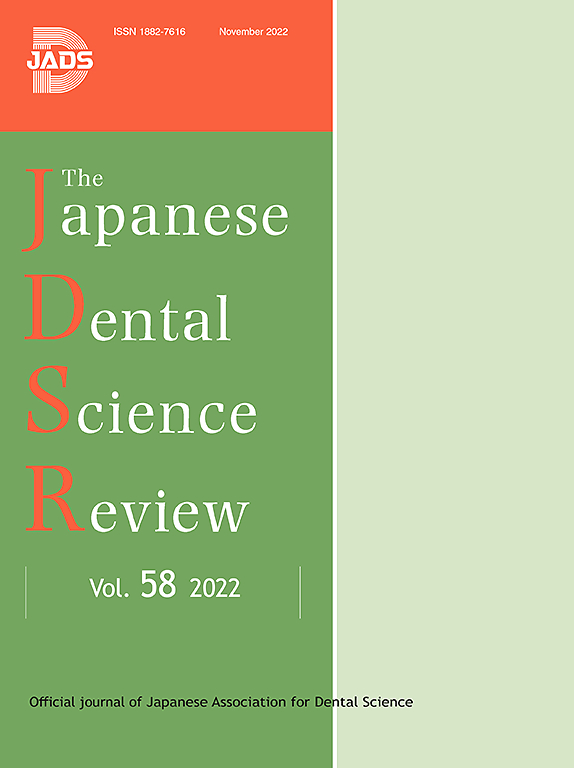Nanoidentification in endodontics: Bibliometric analysis and comprehensive review on the basis of characterisation research by Nano-computed tomography imaging
IF 6.6
2区 医学
Q1 DENTISTRY, ORAL SURGERY & MEDICINE
引用次数: 0
Abstract
Nanoimaging, crucial in endodontics, has advanced, leading to more effective and less invasive treatments. Nano-computed tomography (nano-CT) is an advanced imaging technique to evaluate bone structures or gaps in filling materials, providing submicrometer spatial resolution due to smaller focal points and voxels, higher signal-to-noise ratios, and higher tube voltages and powers compared to conventional devices, improving dental imaging precision and safety by producing detailed images with minimal radiation exposure. This study conducted a bibliometric analysis on nano-CT imaging as a nano identification tool in endodontics. Using various tools and methods, it evaluated progress and trends in nano-CT, aiming to enhance understanding of bibliometric data and complement existing endodontic knowledge. Nano-CT imaging has gained prominence in endodontics research, offering potential applications and insights into various aspects of the field. A review of relevant studies highlighted the technique's ability to visualize dentin tubules, root canal anatomy, filling quality, root resorption, cracks, microcracks, soft dental tissues, cellular layers, volumetric changes post-instrumentation, hard tissue debris, root surface deposits, and bioceramic pore structures. Nano-CT has the potential to become the gold standard for imaging in endodontics, presenting opportunities and challenges for future research. These findings provide researchers and practitioners with the latest advancements in nanoimaging.
牙髓学中的纳米鉴定:文献计量学分析和基于纳米计算机断层成像表征研究的综合综述
纳米成像技术在牙髓学中发挥着至关重要的作用,它已经取得了进展,导致了更有效和更少侵入性的治疗。纳米计算机断层扫描(纳米ct)是一种先进的成像技术,用于评估骨结构或填充材料中的间隙,与传统设备相比,由于更小的焦点和体素,更高的信噪比,更高的管电压和功率,提供亚微米的空间分辨率,通过产生最小辐射暴露的详细图像来提高牙科成像精度和安全性。本研究对纳米ct成像作为牙髓学纳米识别工具进行了文献计量学分析。使用各种工具和方法,评估纳米ct的进展和趋势,旨在加强对文献计量数据的理解,并补充现有的牙髓学知识。纳米ct成像在牙髓学研究中获得了突出的地位,为该领域的各个方面提供了潜在的应用和见解。相关研究综述强调了该技术能够可视化牙本质小管、根管解剖、填充质量、根吸收、裂缝、微裂缝、软牙组织、细胞层、仪器后体积变化、硬组织碎片、根表面沉积物和生物陶瓷孔结构。纳米ct有可能成为牙髓学成像的黄金标准,为未来的研究带来机遇和挑战。这些发现为研究人员和从业人员提供了纳米成像的最新进展。
本文章由计算机程序翻译,如有差异,请以英文原文为准。
求助全文
约1分钟内获得全文
求助全文
来源期刊

Japanese Dental Science Review
DENTISTRY, ORAL SURGERY & MEDICINE-
CiteScore
9.90
自引率
1.50%
发文量
31
审稿时长
32 days
期刊介绍:
The Japanese Dental Science Review is published by the Japanese Association for Dental Science aiming to introduce the modern aspects of the dental basic and clinical sciences in Japan, and to share and discuss the update information with foreign researchers and dentists for further development of dentistry. In principle, papers are written and submitted on the invitation of one of the Editors, although the Editors would be glad to receive suggestions. Proposals for review articles should be sent by the authors to one of the Editors by e-mail. All submitted papers are subject to the peer- refereeing process.
 求助内容:
求助内容: 应助结果提醒方式:
应助结果提醒方式:


